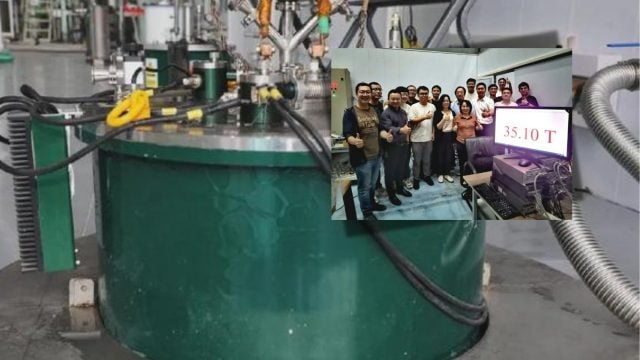The breakthrough could transform any field that relies on ultra‑powerful magnets, including aerospace electromagnetic propulsion, power transmission, magnetic resonance imaging (MRI), nuclear fusion, and superconducting magnetic levitation, or maglev. The fully superconducting magnet developed by researchers at the Institute of Plasma Physics of the Chinese Academy of Sciences (CAS) operated stably for 30 minutes before being safely demagnetized.
The team included researchers from the Hefei International Center for Applied Superconductivity, the Energy Research Institute of the Hefei Comprehensive National Science Center, and Tsinghua University .
The new world record applies to a fully superconducting magnet, which offers advantages for advanced applications over other magnet types that have achieved higher experimental fields, including greater stability and minimal electrical energy loss.
The team’s magnet, made from superconducting material, surpassed the previous world record of 32.35 T for a fully superconducting magnet set in 2019.
That record was set by researchers from CAS’s Institute of Electrical Engineering and the University of the Chinese Academy of Sciences. Their superconducting magnet has been used at the Beijing‑based Synergized Extreme Condition User Facility, which investigates matter under extreme conditions.
Before that, a team at the U.S. National High Magnetic Field Laboratory developed a magnet that reached 32 T in 2017.
According to the CAS Institute of Electrical Engineering, the upper limit of magnetic field strength generated by low‑temperature superconducting magnets is about 23 T—an achievement that paved the way for technologies such as hospital MRI machines.
To push beyond that level, researchers combine these low‑temperature magnets, which contribute most of the field, with others that operate at higher temperatures to further boost the overall magnetic field.
To set the latest record, the Chinese team placed a high‑temperature superconducting magnet at the center of a low‑temperature superconducting magnet.
The feat was achieved by enhancing the mechanical stability and electromagnetic performance of the superconducting magnet, overcoming challenges such as stress concentration and multi‑magnetic‑field coupling, according to CAS.
The advancement will provide technical support for frontier areas such as fusion magnet systems and could help accelerate the commercialization of instruments like nuclear magnetic resonance (NMR) spectrometers, which are used to analyze molecular structures, according to the Xinhua news agency.
El Ciudadano











